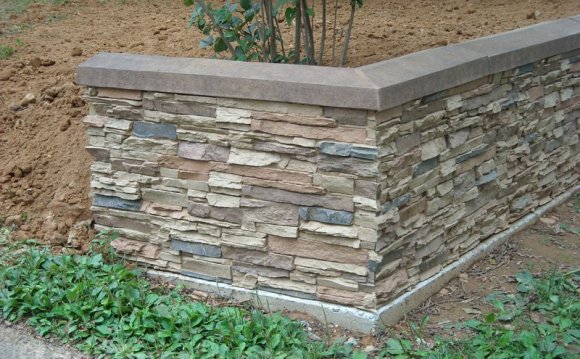
 The blocks for this project have a locking flange — which makes the installation easy. The interlocking blocks can be used to build walls up to 28 inches high. Follow the block manufacturer's instructions concerning wall height limits.
The blocks for this project have a locking flange — which makes the installation easy. The interlocking blocks can be used to build walls up to 28 inches high. Follow the block manufacturer's instructions concerning wall height limits.
Plan your layout. Avoid having downspouts pointed at the retaining wall and, if it's against the house, keep soil and mulch well below the siding.
Your retaining wall design will determine how you mark the area. To mark a freeform layout, use a rope or hose to outline the shape. Then use a shovel to mark the outline. For straight lines, mark the entire bed area with stakes, string and marking paint. Mark curved corners by tying a string to a stake that's equidistant to the edge — creating a compass — and spraying the curves with marking paint.
To determine how many blocks you'll need per row, divide the total length of the wall by the length of the block. To see how many rows you'll need, divide the ideal wall height by the height of the block — account for the first row to be half-buried. See Planning for a Block Retaining Wall for more information on estimating project materials.
Before you buy materials or begin work, check local building codes and your homeowner's association regulations to see if there are any restrictions or requirements you need to follow. A permit may be mandatory in some areas.
YOU MIGHT ALSO LIKE












